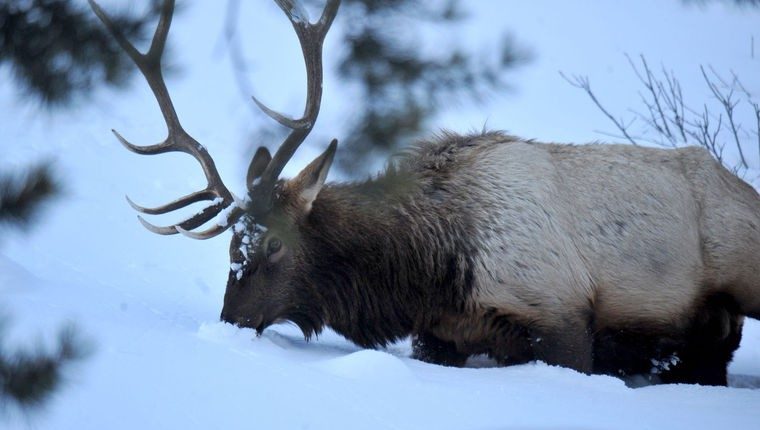Coyotes seem to be able to adapt and live in almost any environment.
Once I saw one trotting down Main Street before daylight hunting for a meal. Another time I was headed to Cabela’s to conduct a varmint hunting seminar, and as I was getting on the interstate, I looked over and there was a coyote working down a fence line. They are the ultimate survivors.
I’ve shot them with rifles, pistols, bows and shotguns. They have the nickname “Wily Coyote.” One miss and you have an educated coyote. Let’s talk today about how to hunt them.
You can pick up a coyote periodically while deer hunting or driving around, but you need to learn to call to get big numbers. Coyotes are sly, so you need to camo up head to toe. Even though your hands aren’t very big, you move them more than any other part of your body, so you’ll need to wear gloves. For your face, wear a net mask.
When you do a setup, hide behind something such as sagebrush. I just discovered a portable blind called the Ameristep Throwdown Blind, which can be found at www.ameristep.com. I’m about to grab one and start testing it. They fold up almost as small as an umbrella and can’t weigh much more than 2 pounds.
Next, you need a cover scent. When a coyote comes in, he always circles downwind after he gets close.
Another item that will help put the final touch on your set-up is a decoy. I use Montana Decoys. They’re lightweight and easy to carry. I usually put up a rabbit or maybe a fawn and a coyote decoy. So I turn one south and one east. That way they’ll see something no matter which way they come.
There are basically two kinds of decoys. The above and then there are also attractant decoys. You can make your own by tying a turkey feather on a string and hang it off a metal rod stuck in the ground at an angle. It catches their attention by dangling in the wind. I use a Cass Creek Waggler, which is an electronic decoy. Coyotes like to see movement.
Now we’re ready to call. Fifty years ago, all we had were wood hand calls and the experts recommended calling a few seconds then waiting five minutes. Years later, I was hunting with a buddy and he called non-stop. I looked up and three coyotes were coming in at once. Hmmm, maybe I’d been raised wrong. You need to call non-stop.
I used a hand call for a long time, but electronic calls are the ticket. You can set it out 30 to 50 yards by your decoy so when they come in they’re focusing on the call and not you. It constantly amazes me how the animal comes in straight to me when I’m calling. I don’t care if it’s an elk or a coyote. I’ve had elk come over the top of a mountain and walk straight to me. They can pinpoint a noise to the inch.
I use a Johnny Stewart Gallows. It has a ton of various calls and I love it. It has a remote control that allows you to make different selections while you’re hunting. That way, if nothing is responding, you can change the call with the push of a button.
Everyone will tell you to start out low. Then if nothing comes in, crank up the volume a little. What if a coyote is lying out in the grass sleeping 100 yards away and you turn on your call at rock star levels and blow him out of his bed? It may sound a little abnormal to him.
I was at a seminar once and the guy said if you can hear your call at 40 yards, then he can hear it way out there. I think that is somewhat true, but I think he was from back east and not used to hunting in wide open space like we are out here.
There is so much more to cover, but I am out of space. Let me finish on what gun to use. I’ve killed them with .22s, but they’re too small. Use a .223 and larger. If there are two of us, one of us is carrying a shotgun using Hevi-Shot Dead Coyote loads. Last year, 40 percent of my coyotes popped up at shotgun range coming in at Mach I. Coyotes are notorious for popping up where they’re not supposed to be. Be ready!
Tom Claycomb lives in Idaho and has outdoors columns in newspapers in Alaska, Idaho, Utah, Nevada, Colorado and Louisiana. He also writes for various outdoors magazines and teaches outdoors seminars at stores like Cabela’s, Sportsman’s Warehouse and Bass Pro Shop.

